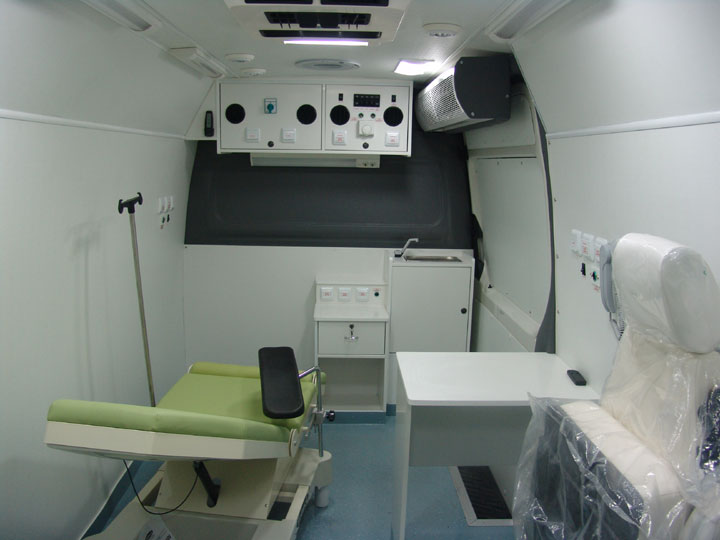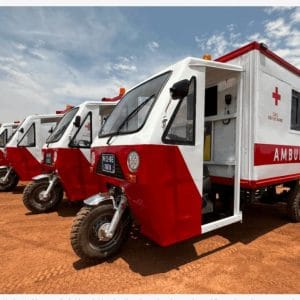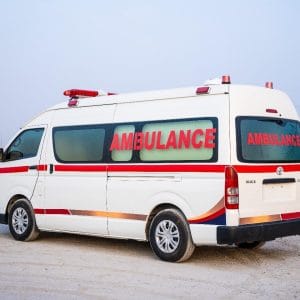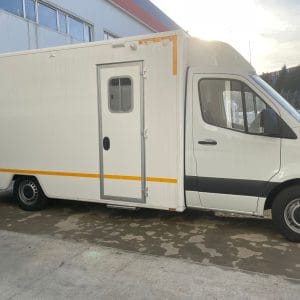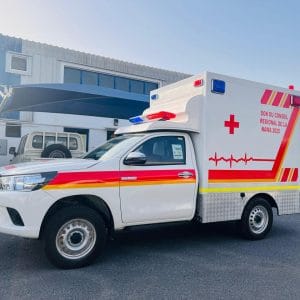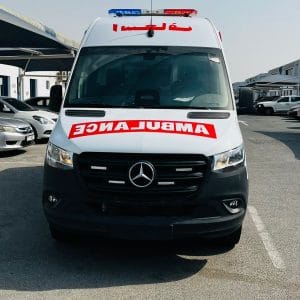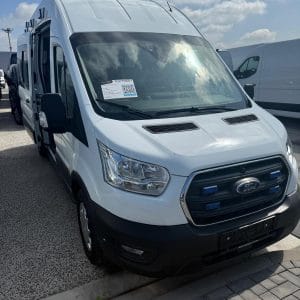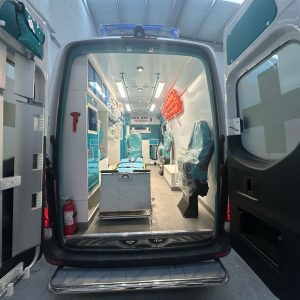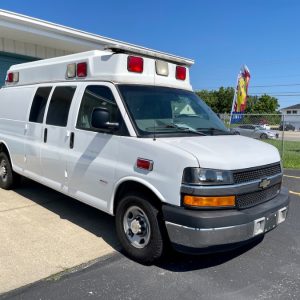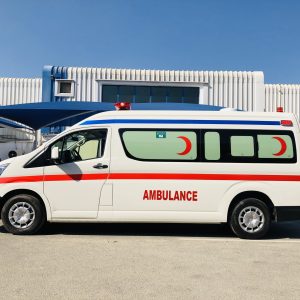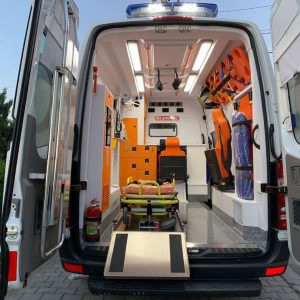1. Introduction
Blood Donation Mobile Health Vehicle; The use of mobile health clinics allows doctors to focus on the health of the patients and to completely eliminate all attendees who have no problem. Applause or SRS clinic location is diverse, operation is flexible, short-term and quick response time, is the easiest and fastest means of relief, can reduce the impact of medical conditions of the patients, realize the emergency, continuation of care, health care, prevention, monitoring, diagnosis and clinical service function. It is especially suitable for some remote, mobile, emergency and the susceptibility to the civilian tenderness and the difficulty of the indigenous shrinkage for preventive care, treatment and assistance. The mobile clinic environment and the mobile events, however, may differ from the daily acquisition of acupuncture. Once patients grow under the stress of physical and mental, their treatment and services will also lack the sense of safety and dependence, so that the curative effect and service target can not be achieved.
The idea for this case study is nationwide volunteer the cheerful, care, and the team of the company to establish volunteer, the national philanthropy foundation. Virtual regard to members of the community who lack health care, the acute the importance of medical treatment and health management, a commission was set up by the national tires and the ship’s health center, so by all the tire and the ship’s senior official of the association in the center of the city and the director of the doctor.ask in the car performed in the mission and experience that the health center has provided throughout the years in China. As the center of the design center, the doctor supports the ambition of ShangShanghai, the average of all the people is the main source of the people’s daily lives, and provides the help to the department of Yi industry, including the international trip of the Marriott and the city of the city.
1.1. Significance of Blood Donation Mobile Health Vehicles
Blood donation is a voluntary act that requires human empathy and delivers a huge positive impact on society. Various NGOs and public service organizations devote themselves to establishing and maintaining stable blood donation channels. This study, partnering with a non-profit medical and blood service organization, proposes an innovative blood donation station. Blood Donation Mobile Health Vehicles (BDMHV) approach societies with a “bring-donation-closer-to-you” service operation practice, aiming to provide a hassle-free condition for common people, in addition to the fixed donation center, to help other patients or citizens in need. With the ability to move donation services near people, BDMHVs are able to attend large-scale activities or exhibitions, making blood donation easy for citizens who have the time and desire. Even for those who have that momentary impulse but have no plans or time to donate blood, the vehicles can design itineraries to return to scheduled locations to make blood donation follow-up activities more efficient and personalized.
Preventive public health can design different mobile health vehicles to fit subdivided service purposes. This study aimed to build an interior atmosphere of Blood Donation Mobile Health Vehicles reflecting spatial characteristics of medical service facilities and blood donation facilities to attract people, especially potential donors, to enjoy the mood and initiate a donation behavior during the moment. Through a simulated scene visual experience, motivation designed for social and behavioral factors will become a significant characteristic of future mobile blood donation facilities. An optimal interior spatial configuration with an aesthetic and comfortable dining atmosphere, designed to actively trigger donation behaviors stemmed from viewing or experiencing the mood, is the study outcome. The experimental simulation not only combined government policies for incorporating specific service targets to engage in the required blood donation service skill set but also supplemented the strategies to optimize social capital considerations accompanying blood donation service participation.
2. Design Considerations
2.1. Interior Planning The general layout of the mobile health vehicle was designed taking into account human blood circulatory organization and being attentive to the comfort and psychological states of the donors. It is spacious and simple in plan. Although it is based on the needs of the design, the door is equipped with a retractable door to mask the unpleasant sense and sight when entering. Windows are set up to sufficiently maintain the freshness of the air. The area for blood donation in the vehicle is comfortable and attractive.
2.2. Separation of the Blood Donation Area The blood donation area aims to reduce the resistance of the existing fixed temporary blood donation station and the embarrassing state of the donor and the voluntary staff, and separate the temporary blood donation area away from the voluntary staff and the blood donation machine not related to personal privacy. According to the study, the staff of the mobile health vehicle took the action of moving the tampon in front of the disaster tent outside the vehicle. At that moment, the psychological resistance point of the donor had already stepped in.
2.3. Arrangement The separation and the establishment of uninfluenced space bring the final goal—the effect of the relief—to the actual situation and surroundings of the donor in advance of the action. For the above reason, the design was set in the range of the bloodlet in the mobile health vehicle: Go to window 1 to check in; window 2 interviews and can clarify the purpose; both refractive windows 1 and 2 are used for administrative tasks such as providing materials; the companion stops here; you can rest here and drink tea; windows 3, 4, 5, and so on. To do the actual blood collection; step 6 is set up near the steps to enter the process; the agent is cared for here; the driving door serves as a cold; and the street area separated by the street serves as a process management site. All the arrangements are considered to improve actual operation.
2.1. Functionality and Layout
The overall spatial quality of a mobile health vehicle can affect the efficiency and effectiveness in delivering healthcare services to the specific users or the public it serves. It is therefore essential to develop appropriate interior environments that are functional, organized, efficient, adaptable, aesthetically pleasing, and help create a soothing and supportive atmosphere.
As Blood Donation Mobile Health Vehicle requires a specific assessment or examination process before blood collection, it is common for various forms of blood donation vehicles that offer a certain form of divide-and-conquer approach, e.g. mobile blood donation vehicle, blood research processing vehicle, blood testing vehicle, cancer screening vehicle, and others. This concept is widely used throughout the world, especially in places where there is a lack of physical space in search of volunteers in remote and rural areas. The mobile blood donation vehicle is commonly built with adapted medical specifications based on the local context. As the needs and policy of blood donation change, the functional layout will also be reorganized to suit its operation.
The considerate layout that covers the functionality for routing ambulation, positioning of equipment or supplies, privacy needs, caregiving needs, safety, and security during the delivery of the service was listed as a priority policy. For mobile health vehicle interior design, the layout design element that contributes to quality internal space is able to support basic but emergent activities in healthcare delivery.
Borrowing from the elements of mobile healthcare and regular healthcare interior design, it is possible to generate a few design principles that can be utilized to generate specifications for improving the layout of the blood donation mobile health vehicle. Some of these specifications can refer to Sensory Design in Healthcare Nursing – Visual and activities within the space. For example, an evident interior plan or demarcated zones that cater to the service entry, client welcome, health assessment/examination, actual donation, and recreation zones, and privacy areas will be able to provide clear personal and group areas and minimize internal movement confusion for users.
2.2. Safety and Hygiene Measures
To avoid potential health and safety hazards, stringent quality, safety, and hygiene measures are necessary for effective blood donation. In some clinics, cleanliness of the environment and safety of the tools were not observed. Focused attention on center organization, layout, and the design configuration is needed to optimize resources and maintain maximum quality and safety. Blood donation laws or options are difficult for policymakers based on current mortality rates, health risks, and potential donors. Protecting the health and safety of blood donors and optimizing donation levels are important and consistent social goals. Management practices are essential for employee safety and health, indispensable to the operation for the productivity of the organization.
Blood donation reduces the increased risks for heart disease, cancer, and nervous system disorders. Safety and hygiene are also important in blood donation mobile health vehicles’ interior spaces. Some soft and joint finishes can reduce the use of chemical materials inside the vehicle. Upholstery surfaces, armrests, and handrails that serve two interfaces conventional seating provide a uniform surface with good softness, resilience, density support, and offer good comfort and support. Special design for easy cleaning, structural durability, and aesthetics. Polyether foam with integral skin-backed formed provides similar performance (-5%) high elastic foam with high cover hardware library market components. In some portions of these hospital and healthcare facilities, surface finish considerations take on but a secondary role when juxtaposed against other issues.
3. Interior Elements
Every single feature in a vehicle interior does not stand by itself, and each of them was designed to be a part of the whole. Interior space can generally be divided into two areas: the instrument panel area and the cabin area. The instrument panel area comprises the instrument panel, steering, brake pedal, and accelerator, while the cabin area generally consists of seats, headliner, and lighting. The interior instruments could be classified into two: the components of the instrument panel and the components of the body. Details of the component enumeration are explained below.
The instrument panel or dashboard is the front of the instrument area and is the executive region for passengers and drivers to help operate the vehicle. Additionally, front-end elements such as the audio and front windshield may influence the instrument panel region of the vehicle, so engineers should carefully schedule the spatial arrangement of the front-end part when designing the interior compartment. The basic function of the instrument panel is to collect all the instruments on one board, including the driving instrument, operation module, audio, caging, hazer, and air conditioning, and in addition, can protect the driver during a collision. In the instrument panel structure, it not only comforts drivers in car operation but also helps them perceive car traveling information and parameters.
In the passenger vehicle, the instrument panel is between the front switch and the type, in the front roof and in the front compartment. People who sit in the back compartment will not see the instrument panel space generally. According to the investigation, drivers often violate regulations because of simple and convenient occlusion of the instrument panel in the operation. This issue stipulates that design engineers build up the structure elongation in the long-axis direction to protect passengers during the crash event. Moreover, the design engineers should leave enough space for the airbag deployment during the accident.
3.1. Seating and Waiting Area Design
The function of the blood donation mobile health vehicle includes the periods of the staff and the donors. The seating area in the front half of the model is mainly for participants during the blood donation process. The part adjacent to the blood donation area is reserved for the donors who have proven to have normal vital signs in the previous health check area. It is within the control distance of the medical staff. After successful donation, it needs to continue to squat and observe in this area. The donor can wait at the back door and leave the vehicle according to the guidance. The front half platform adopts the design concept of a waiting hall. The lighting module extends to the waiting hall through the edge of the inclined new bridge. The acrobatic display window at the back wall has natural light filtering and is covered. High side window.
The design features of the blood donation vehicle’s seating and waiting area are as follows: (1) the symmetrical single sides. All the rest areas are placed on one side. The design is on the other side to facilitate donors to have free choice of seats. The spatial pattern combines the nature of the bridge and discarded shipping containers’ narrow and long structure characteristics. The seating areas are arranged in a linear manner. At the same time, the convenience of the seats along the sides of the container and the surrounding wall of the seat body are designed to be all inclined legs. In case of squatting waiting area, the corresponding device is realized, and the open space is formed in the middle. Regardless of whether it is a new bridge design or invasive medical care area, it is emphasized in the open platform design. The openness of the seats and individual privacy are maintained. The functional display areas, acrobatics display window, and surrounding soft lighting circled around are hidden inside the platform structure. The waiting hall effect of the container is shown. The donor-donated sense of separation is eliminated. The crosstalk of the donor and the volunteer staff is smooth and natural. The blood donation organization’s social quality and image are improved.
3.2. Donor Bed and Privacy Partitions
The design inspiration for the donor bed platform can be drawn from the seat design principles to enhance blood donors’ convenience during the donation process. The current World Health Organization’s safe donation site for blood aims to address the need for convenient, secure, and pleasant blood donation by applying principles of hospitality in a way that places vital importance on the safety and well-being of donors. Therefore, in the previous research on other mobile blood donation clinics or other mobile health vehicles, that accessibility focus on a blood donation environment was addressed. Provided conveniently on the same level, the step of blood collection chair connection, quick entry, and trauma reduction are good ideas to encourage continued donation. However, study Gstrpos by Altaie and Yazer were limitations of this review and recent trends in donating facilities were not sufficiently discussed, focusing more on body donation requirements, especially red blood cell-derived procedures. Large national or private X fired donor organizations are actively searching for potential donors and are focused on major recruitment events in public places. Therefore, it is hoped that the review and subsequent specific recommendations encourage outreach organizations to create a more attractive and secure and pleasant first-time and re-donation experience for donors.
Privacy is an important aspect of blood donation, and blood collection facilities often have specific factors that make maintaining donor privacy difficult. The blood collection beds and the chairs are often located next to each other, making it easy for potential donors to notice those who are donating. The construction of applicable privacy screens can be extremely helpful. The design of privacy screens must balance the need for patient privacy with function and storage requirements. Freestanding screens are advantageous because of these intervals, but they can take up too much space in the room. Wall-mounted screens will save space, but will not always be adequate. Magnetic wall-mounted screens can also be considered, allowing space to be opened up when not in use. However, it would also be easier to use as low armrest holders. Wide step designs were also necessary for ease of moving in and out of beds and transfusion chairs. Large overall sizes made it difficult for medical professionals to move and to store the beds and transfusion chairs in the room. The privacy screen structure included a decorative screen such as a window blind in Oxford, the tip of a detachable privacy screen, and a storage compartment. Religious privacy is also a consideration. While patients are affected, religious coverage of the primary members becomes a mere barrier to the surge of possible freestanding screens. It may be necessary to use freestanding screens with removable storage units. Religious beliefs and practical storage issues need to be addressed to be able to create a user in high health care.
4. Technological Integration
In the era of rapid development of network technology, advertising light boxes located in the busiest areas of the city can form a good advertising effect. The mobile medical vehicle adopts the on-board rain screen TV advertising light box, which can not only improve the utilization of the vehicles but also form a good medical brand effect. The purpose is to expand and change the original on-board medical vehicle into a new type of smart intelligent medical vehicle through the network platform, so as to simplify the complex running process of the doctor-patient relationship, realize the shared intelligence of doctor-patient resources, and form industrial synergy. The intelligent medical vehicle platform realizes the functions of doctor-patient online consultation, appointment registration and demand response, registration confirmation, expert search, intelligent navigation, online recharge, smart appointment cloud registration, etc., through the mobile client, to facilitate all kinds of customer service requirements for the use of kernel and remote intelligent information system.
The core research approach of intelligent medical vehicle platform can give full consideration to the unsoundness of integrated application technology and the limitations of network utilization level. Smart medical vehicles can provide direct experience and accessibility for different levels and types of populations. Through the intelligent information technology of intelligent medical connected vehicle management application scenarios, combining with the built-in intelligent vehicle system of mobile medical vehicle for value-added features, can satisfy the diversified intelligent medical auxiliary system to the greatest extent, and realize the targeted intelligent transformation of the existing region-specific mobile medical vehicle. It has important research value and real application value. At present, the design of intelligent medical vehicle platform has not been seen in the field of mobile medical vehicle research. With the popularity of the leasing business model, intelligent medical-connected vehicle applications also provide a new intelligent upgrade program and market demand for mobile medical vehicles. The mobile vehicle is put into use on the busy avenue, and the customer has the demand to take the smart medical examination, saves the time and the economic resource that the medical examination house is sitting again. The intelligent vehicle can also be linked to the mobile network or the Internet, and the intelligent interaction service mode of the intelligent medical vehicle platform can be remotely controlled to carry out the smart medical image rectification treatment.
4.1. Medical Equipment Placement
1. Mobile health vehicle is a facility that can provide convenient medical services to people who live far from the city. Blood donation service, a form of altruistic love, is an important part of mobile health. According to the data in literature, mobile blood collection is one of the most convenient and efficient ways to guarantee the need for enough high-quality whole blood and blood components. This paper aims to discuss the interior design of the blood donation mobile health vehicle. The design proceeds as follows: First, we collected the requirements of the blood donation mobile health vehicle. Then, we drew the plans and sections according to the requirements. Subsequently, we drew the equipment layout plans. Based on experimental results, we suggest more mobile health vehicles combine with various medical services to make donors more interested.
2. Medical equipment placement is the design point of the whole interior and involves all kinds of medical equipment, such as the donor area. A good interior design can make donors more supportive. The donors are divided into two groups: active and inactive. One is the first-time donors, and the other is the qualified donors who want to donate blood regularly. The blood donation mobile vehicle should be designed with sufficient and reasonable equipment and a comfortable and warm atmosphere to deposit for the donor, mainly including the following five areas: rest area, examination area, blood donation area, medical guidance area, and aftercare area. The layout of the medical facilities in the vehicle should consider the service processes and the spatial relationships. In order to ensure privacy, some functional areas cannot be too concentrated, and the medical security of the vehicle should be maximized. In addition, the vehicle should be equipped with more luxury facilities to improve the satisfaction of the donors.
5. Conclusion
In this text, especially in the Urban Redevelopment Authority section, it is highlighted how significantly changing healthcare perceptions became a question for healthcare systems. Moreover, there is a point that health services are not only general care or treatment; in fact, it is an integrated structure with a harmony of environment, customer, and staff. Although URA’s development plan is based on achieving living health and sustainable favorable environments with good job efficiency, it requires a plan. A plan based on new regulations, transformations, and the creation of unique and pleasant environment health facilities. For all these reasons, the design of a health facility can even be considered as a criterion for accreditation.
The mobile health vehicle is an affordable system for a patient who is at the beginning of the bad days. Because it was designed to get to the patient, not the patient to the healthcare facility. The design of a blood donation mobile health vehicle, which is a unique part of health, could have positive effects on the public health perceived values. However, while this validation has been defined, it is essential to maintain these requirements in architectural services.
For this reason, the related authorities need to design environmental staff relations formed with the right elements, having living spaces with social and psychological benefits. As a result of the need and simulation-based spatial arrangement approach suggested, the assigned design team can think about the stimulating interior for healthcare service and the mobile health vehicle interior came together with the passenger-oriented statements and safety demands. During prioritization, safe and unsuitable passenger needs were also taken into consideration. It seems that mobile health vehicle interior spatial arrangements were well balanced. The conceptualized mobile health interior design model therefore provides enough justifications to ensure the vehicle not only reflects functional and aesthetic inside but also examines the mobile health vehicle as a customer production-oriented health facility. Thus, the mobile health vehicle is evaluated as a customer production-oriented health service. Consequently, this kind of purposeful study will be able to produce information in a way that reduces disagreement considering customer expectations. For this reason, it will also support URA action plans and comply with the health authority’s measures.


